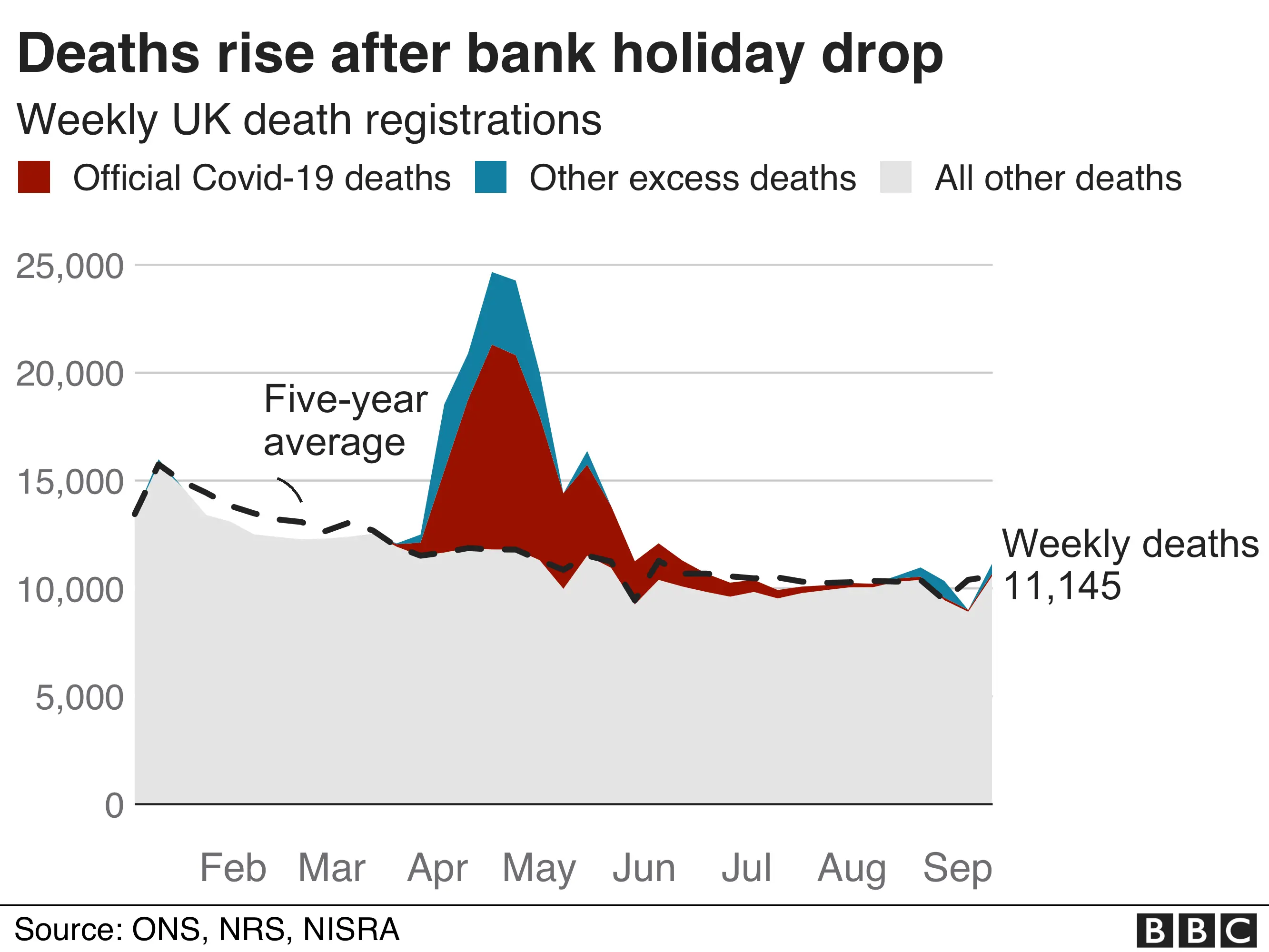Covid: Deaths near lowest level since March
 Getty Images
Getty ImagesCoronavirus contributed to 1% of all deaths in England and Wales in the second week of this month.
That's among the lowest figures published by the Office for National Statistics (ONS) since March when the pandemic took hold.
It's feared this will rise following recent increases in cases and hospitalisations.
Deaths from all causes in England and Wales were higher than average in the week to 11 September.

This is likely to be because the August Bank Holiday delayed reporting, however.
The north west of England had the most deaths from coronavirus.
The ONS counted registrations where "novel coronavirus" was mentioned on the death certificate.
Although coronavirus deaths remain relatively low, this week also marks the first time they have increased rather than decreased since the beginning of April.
The government is poised to introduce new restrictions on gatherings and hospitality, as cases of infection have begun to rise again.
Deaths hit their lowest point since mid-March in the week to 4 September, with 78 deaths certificates mentioning coronavirus as a factor.
But analysis from Oxford University suggests that the number of Covid-19 deaths could be even lower.
The ONS count includes any death certificate that mentions Covid-19.
The Oxford analysis suggests that an increasing proportion of these death registrations mention Covid-19 without saying that the disease was a direct or underlying cause of the death.

In total, there were 51,818 deaths in England and Wales where coronavirus was mentioned on the death certificate - making up 12% of all deaths this year.
The ONS also looked at deaths among the working-age population between March and June, before many lockdown restrictions were eased.
It found of just over 5,000 deaths - 72% - were likely to be the result of an infection acquired before lockdown came into force.
People working in factories, and in the care and leisure sectors, had a significantly higher risk of dying than the average population.